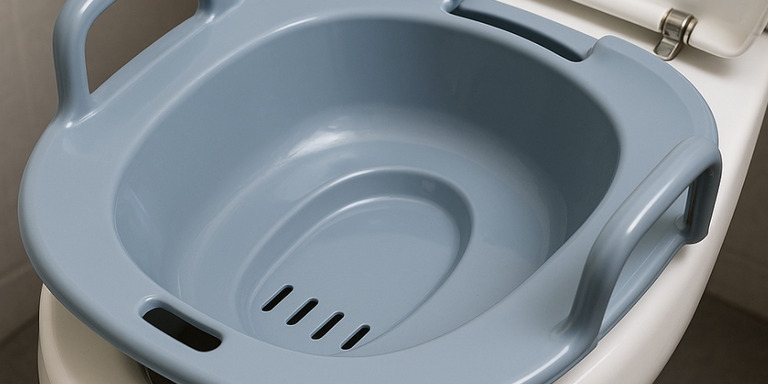Physiological and Psychological Changes During the Postpartum Period and Optimal Care
The postpartum period, also known as the puerperium, is a recovery phase lasting approximately 6 to 8 weeks. During this time, the uterus contracts to expel remaining placental tissue and prevent hemorrhage, while perineal tissues begin to heal. Hormonal changes also impact the mother's psychological state. This stage requires close medical follow-up to ensure proper recovery and minimize complications. This article outlines the key physiological and psychological changes during the postpartum period and provides evidence-based guidance for optimal care.
Postpartum Uterine Pain
Strong uterine contractions cease once the baby is delivered, but the uterus continues to contract to detach and expel the placenta. These contractions persist until the placenta and membranes are fully expelled, marking the completion of vaginal delivery. Typically, placental expulsion occurs within 30 minutes post-delivery, most commonly within 5–15 minutes.
Following placental delivery, the uterus continues to contract intermittently to compress blood vessels at the placental site, thereby minimizing the risk of excessive bleeding. These contractions are often experienced as cramp-like lower abdominal pain, peaking around the second or third day postpartum and gradually subsiding within a week as the uterus involutes. The pain usually resolves completely once the uterus returns to its pre-pregnancy size.
Uterine involution generally takes about six weeks, although this duration may vary slightly between individuals. It can be prolonged in women with multiple pregnancies or twin/multiple gestations, but typically does not exceed 6 to 8 weeks.
Breastfeeding stimulates the release of oxytocin, which promotes uterine contractions and accelerates uterine involution while reducing the risk of postpartum hemorrhage.
Perineal Care
After a vaginal birth—whether sutures were required following a medical episiotomy or not needed due to a minor spontaneous tear—the perineal tissues undergo a typical healing process. Below are recommended care practices to support recovery:
- Cold compresses: Apply ice packs or cold packs (wrapped in a clean, soft cloth) to the perineal area for 10–20 minutes during the first two to three days postpartum to reduce swelling and pain.
- Witch hazel pads or medicated wipes: These can provide safe and effective pain relief in the early postpartum period.
- Warm showers: Wait at least 24 hours after delivery before showering. Consult your healthcare provider for personalized guidance. Use clean towels and ensure the bathing area is sanitized each time.
- Sitz baths: Starting 24 hours after delivery, you can sit in warm (not hot) shallow water for 10–15 minutes, two to three times daily or after bowel movements. This helps cleanse the area and relieve swelling and discomfort.

- Pain relievers: Consult your physician regarding the use of medications such as paracetamol (acetaminophen) to relieve discomfort. Some analgesics may pose potential risks to the infant during breastfeeding, so always ask about the safest option for your condition and the recommended dosage.
Gastrointestinal and Urinary Tract Care
Bowel movements and constipation: Some women may worry about hard stools or constipation after childbirth. Speak with your healthcare provider about using gentle laxatives or stool softeners to reduce straining and pain during defecation. Drinking adequate fluids and consuming a fiber-rich diet (fruits, vegetables, whole grains) helps promote regular bowel function.
Painful urination: It is common to experience discomfort during urination in the first few days postpartum, especially if there is swelling or sutures in the perineal area. Using a warm water spray (perineal bottle) after urination can help alleviate pain, which typically subsides within 24–48 hours. If there is persistent burning or pain, consult your physician to rule out urinary tract infection.
Pelvic floor exercises (Kegels): You can begin these exercises when you feel physically ready. Kegel exercises enhance blood circulation to the area and support healing of the muscles and sphincters. To perform the exercise, contract the pelvic floor muscles as if trying to stop urine flow, then relax. Repeat 10–15 times for two sets daily.
Lochia (Postpartum Vaginal Discharge)
Lochia is the normal vaginal bleeding that happens after giving birth and continues during the postpartum period. It occurs as the uterus sheds its lining and gets rid of leftover tissue and fluids from the placenta. As the uterus slowly shrinks back to its pre-pregnancy size, the amount of bleeding also slowly decreases.
Stages and Characteristics of Lochia
- Lochia Rubra:
- From birth to day 4–5
- Bright red to dark red color
- May contain small clots about the size of a grape
- Lochia Serosa:
- From approximately day 5 to days 10–14
- Pale pink to brownish-yellow
- Less dense, containing watery secretions, mucus, and inflammatory cells
- Lochia Alba:
- From week 3 to week 6–8
- Yellowish or white
- Thin consistency; secretions gradually become clear serum
Expected duration: Lochia usually lasts between 4 to 8 weeks after childbirth, although the exact length can vary from person to person.
Care Recommendations
- Use unscented postpartum sanitary pads and change them often.
- Keep the genital area clean by washing daily with warm water and mild medical soap.
- Do not use vaginal sprays, deodorants, or douches.
- Wear loose, breathable cotton underwear to help the area stay dry and clean.
When to See a Doctor
- Sudden increase in bleeding or return to bright red color after it has lessened.
- Presence of a strong foul odor in the discharge.
- Severe pain accompanying bleeding or fever.
- Recurrent large clots bigger than a golf ball.
Postpartum Weight
- Immediate weight loss: Most women lose about 6 kilograms right after giving birth. This includes the weight of the baby, placenta, and amniotic fluid.
- Loss of extra fluids: More weight is lost in the days following delivery as the body gets rid of extra fluids.
- Calories and breastfeeding: Weight loss after that depends on how much you eat and how active you are. Breastfeeding uses up about 500 extra calories a day, which can help with weight loss.
- Getting back to pre-pregnancy weight: Once your body has stabilized, eating a healthy diet and exercising—after your doctor says it's safe—can help you return to your pre-pregnancy weight.
- Body appearance: It's completely normal to still look pregnant for a while after giving birth. This is due to stretched belly muscles and leftover fluid in the body.
Fatigue and Exhaustion
Postpartum fatigue is common and normal. It happens because of the stress of labor, changes in hormones, blood loss, and interrupted sleep from caring for the baby. This tiredness can continue during the early weeks of recovery and may last for several weeks or even months.
Causes
- Oxytocin secretion and uterine contractions during breastfeeding aid healing but may increase transient fatigue.
- Hormonal fluctuations after pregnancy affect energy and mood.
- Sleep deprivation from frequent infant waking.
- Physical healing demands energy.
When Fatigue Is Concerning
If severe fatigue persists despite adequate rest, or if accompanied by:
- Difficulty performing daily tasks
- Severe depression or persistent negative thoughts
- Unrelieved physical pain
- Consult a healthcare provider to rule out complications or postpartum depression.
Relief Tips
- Take naps when possible, especially during the infant's sleep.
- Accept help with household tasks.
- Plan with your partner for possible postpartum leave.
- Maintain a balanced diet rich in proteins, vegetables, and fruits.
- Stay well hydrated, especially during breastfeeding.
- Start gentle walking when physically ready to improve circulation and energy.
- Seek medical advice if severe fatigue continues or is associated with unusual psychological or physical symptoms.
Hormonal Changes and Their Effects Postpartum
After giving birth, important hormone levels in a woman's body change, leading to both physical and emotional effects. These may include:
- Hair loss: During pregnancy, high estrogen levels slow down hair loss. After birth, estrogen levels drop, causing more hair to fall out, usually starting 2 to 3 months postpartum.
- Night sweats: The body gets rid of extra fluids through sweating, especially at night, which is common in the first few weeks after delivery.
- Dry skin: Lower estrogen levels can make the skin feel dry. Using gentle moisturizers regularly can help.
- Mood swings: Quick hormone changes can cause emotional ups and downs, sometimes called "baby blues." If these feelings last longer than two weeks or get worse, it's important to see a doctor.
- Frequent urination: The kidneys and bladder work more due to extra fluid in the body, so peeing more often is normal.
- Vaginal dryness: Lower estrogen levels, especially during breastfeeding, can cause dryness and lower sex drive. Lubricants can help, but talk to your doctor if sex is painful, if bleeding keeps happening, or if you have signs of infection like fever or strong pain.
These changes are normal and vary in intensity and duration between individuals. Adequate hydration, balanced nutrition, rest, and psychological support help alleviate symptoms and promote recovery.
Physiological and Psychological Changes After Delivery (Mild Postpartum Depression or "Baby Blues")
Fatigue and mood fluctuations postpartum are common and considered normal, known as mild postpartum depression or "baby blues," characterized by:
- Onset within 2–3 days after delivery, peaking around days 5–6, usually resolving within two weeks without specific treatment.
- Symptoms include mood swings, unexplained crying spells, anxiety, sleep difficulties or insomnia, and general fatigue.
Distinguishing from Postpartum Depression
- Symptoms in baby blues are milder, temporary, and improve within two weeks.
- If symptoms persist beyond 14 days or worsen to include severe negative thoughts, consult a healthcare provider to exclude clinical postpartum depression.
Postpartum Medical Follow-Up
For optimal recovery and early complication detection, the American College of Obstetricians and Gynecologists (ACOG) recommends ongoing postpartum care divided into two main phases:
- Initial contact within 1–3 weeks postpartum:
- Can be via phone or face-to-face.
- Focuses on discussing acute symptoms (pain, bleeding, uterine contractions, breastfeeding, mood) and assessing maternal health stability.
- Comprehensive visit before 12 weeks postpartum:
- Usually between 6–12 weeks depending on the mother's condition.
- Includes physical examination of the abdomen, uterus, cervix, urinary and digestive systems, and discussion of:
- Breastfeeding and nutrition
- Emotional and psychological status
- Contraception and future pregnancy planning
- Management of chronic diseases (diabetes, hypertension, thyroid disorders)
If abnormal symptoms such as fever, increased bleeding, severe pain, or mood disturbances occur at any time, contact your healthcare provider immediately, even before the scheduled visit.
Nifas Advice
The postpartum period is a sensitive phase of recovery. There is no need to rush back to your pre-pregnancy state. Allow yourself time, and be gentle with your body and emotions. If you experience overwhelming fatigue, troubling mood swings, or abnormal bleeding, do not hesitate to seek medical attention.
Taking care of yourself is not a luxury it is a medical necessity for both you and your baby. Every small act of self-care brings you closer to full recovery.
Frequently Asked Questions About the Postpartum Period After Vaginal Delivery
1. What is the typical duration of the postpartum period?
The postpartum period usually lasts between four to eight weeks, depending on each woman's physical recovery.
2. When does postpartum bleeding stop?
It gradually decreases as the uterus contracts and usually resolves completely within six to eight weeks.
3. Is it normal to feel uterine contractions after childbirth?
Yes, these are normal uterine contractions that help reduce bleeding and return the uterus to its pre-pregnancy size.
4. What are the stages of postpartum vaginal discharge (lochia)?
Lochia progresses through three stages:
Lochia rubra (up to day 5): bright red, bloody discharge
Lochia serosa (up to day 14): pink or brown, less intense
Lochia alba (up to 8 weeks): white or yellowish, thin and watery
5. When should postpartum pain prompt a doctor visit?
If the pain is severe, accompanied by fever, excessive bleeding, or foul-smelling discharge, medical evaluation is advised.
6. How should the perineal area be cared for after a vaginal delivery?
Apply cold compresses, use sitz baths, maintain hygiene, and take prescribed pain relievers if necessary.
7. Is it common to feel discomfort during urination postpartum?
Yes, especially in the presence of stitches or swelling. Using a warm water spray during urination helps, and the discomfort typically resolves within a couple of days.
8. What causes postpartum hair loss?
It is due to a drop in estrogen levels after childbirth. Hair shedding commonly begins around the second or third month postpartum.
9. When can pre-pregnancy weight be regained?
After weight stabilizes, a balanced diet and regular exercise—upon medical clearance—can help return to pre-pregnancy weight.
10. What is the difference between baby blues and postpartum depression?
Baby blues typically begin a few days after birth and resolve within two weeks. Postpartum depression lasts longer and requires professional treatment.
11. When should a postpartum check-up be scheduled?
An initial visit is recommended within the first three weeks, with a comprehensive assessment before 12 weeks postpartum—or sooner if abnormal symptoms appear.
12. Can pelvic floor exercises be started after delivery?
Yes, once comfortable. These exercises promote blood circulation and support muscle recovery and healing.
13. How can constipation be prevented after childbirth?
By staying well-hydrated, eating a fiber-rich diet, and consulting a doctor about safe stool softeners if needed.





 Commercial Register: 1010917772
Commercial Register: 1010917772
 Phone:
Phone: 

